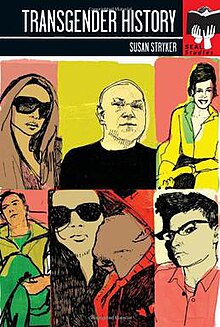Heteronormativity is the concept that heterosexuality is the preferred or normal mode of sexual orientation. It assumes the gender binary and that sexual and marital relations are most fitting between people of opposite sex.
The following outline offers an overview and guide to transgender topics.

Black Laundry is a lesbian, gay, bisexual, transgender, and queer (LGBTQ) organization that uses direct action to oppose Israeli occupation of Palestinian land and advocate for social justice. The group made its first public appearance in 2001 after the second Intifada, where 250 members marched in the Tel Aviv Pride Day parade with the message 'No Pride in Occupation.'
The origin of the LGBT student movement can be linked to other activist movements from the mid-20th century in the United States. The Civil Rights Movement and Second-wave feminist movement were working towards equal rights for other minority groups in the United States. Though the student movement began a few years before the Stonewall riots, the riots helped to spur the student movement to take more action in the US. Despite this, the overall view of these gay liberation student organizations received minimal attention from contemporary LGBT historians. This oversight stems from the idea that the organizations were founded with haste as a result of the riots. Others historians argue that this group gives too much credit to groups that disagree with some of the basic principles of activist LGBT organizations.

CLAGS: The Center for LGBTQ Studies was founded in 1991 by professor Martin Duberman as the first university-based research center in the United States dedicated to the study of historical, cultural, and political issues of lesbian, gay, bisexual, and transgender (LGBT) individuals and communities. Housed at the Graduate Center, CUNY, CLAGS sponsors public programs and conferences, offers fellowships to individual scholars, and functions as a conduit of information. It also serves as a national center for the promotion of scholarship that fosters social change.
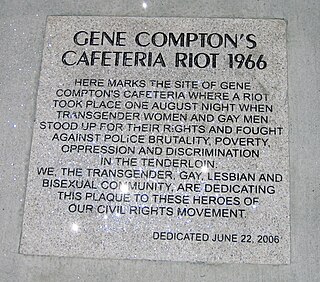
The Compton's Cafeteria riot occurred in August 1966 in the Tenderloin district of San Francisco. The riot was a response to the violent and constant police harassment of drag queens and trans people, particularly trans women. The incident was one of the first LGBT-related riots in United States history, preceding the more famous 1969 Stonewall riots in New York City. It marked the beginning of transgender activism in San Francisco.
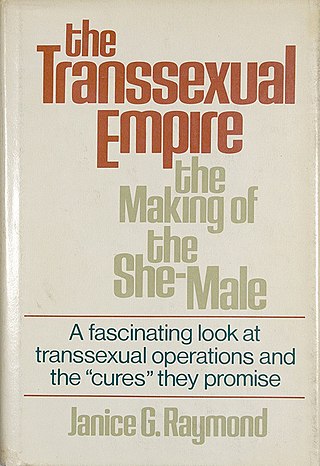
The Transsexual Empire: The Making of the She-Male is a 1979 book critical of transsexualism by American radical feminist author and activist Janice Raymond. The book is derived from Raymond's dissertation, which was produced under the supervision of the feminist theologian Mary Daly.
LGBT movements in the United States comprise an interwoven history of lesbian, gay, bisexual, transgender and allied movements in the United States of America, beginning in the early 20th century and influential in achieving social progress for lesbian, gay, bisexual, transgender and transsexual people.
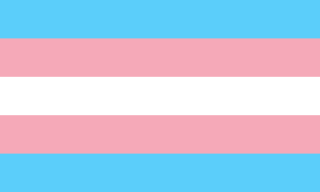
A transgender person is someone whose gender identity differs from that typically associated with the sex they were assigned at birth. Many experience gender dysphoria, which they may seek to alleviate through transitioning, often adopting a different name and set of pronouns in the process. They may pursue gender affirming care such as hormone replacement therapy and various gender-affirming surgeries. Not all transgender people desire these treatments and others may be unable to access them for financial or medical reasons. Those who do desire to medically transition to another sex may identify as transsexual.
Del LaGrace Volcano is an American artist, performer, and activist from California. A formally trained photographer, Volcano's work includes installation, performance and film and interrogates the performance of gender on several levels, especially the performance of masculinity and femininity.
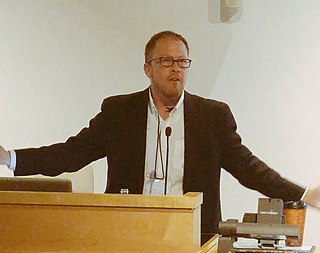
Paisley Currah is political scientist and author, known for his work on the transgender rights movement. His book, Sex Is as Sex Does: Governing Transgender Identity examines the politics of sex classification in the United States. He is a professor of political science and women's and gender studies at Brooklyn College and the Graduate Center of the City University of New York. He was born in Ontario, Canada, received a B.A. from Queen's University at Kingston, Ontario and an M.A and Ph.D. in Government from Cornell University. He lives in Brooklyn.
Queer pornography depicts performers with various gender identities and sexual orientations interacting and exploring genres of desire and pleasure in unique ways. These conveyed interactions distinctively seek to challenge the conventional modes of portraying and experiencing sexually explicit content. Scholar Ingrid Ryberg additionally includes two main objectives of queer pornography in her definition as "interrogating and troubling gender and sexual categories and aiming at sexual arousal."

This article addresses the history of transgender people in the United States from prior to Western contact until the present. There are a few historical accounts of transgender people that have been present in the land now known as the United States at least since the early 1600s. Before Western contact, some Native American tribes had third gender people whose social roles varied from tribe to tribe. People dressing and living differently from the gender roles typical of their sex assigned at birth and contributing to various aspects of American history and culture have been documented from the 17th century to the present day. In the 20th and 21st centuries, advances in gender-affirming surgery as well as transgender activism have influenced transgender life and the popular perception of transgender people in the United States.
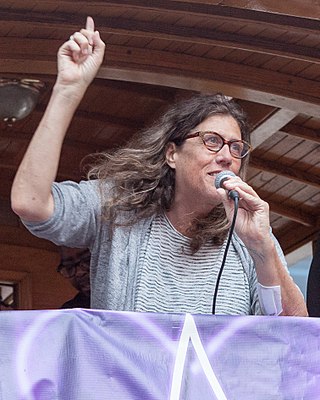
Susan O'Neal Stryker is an American professor, historian, author, filmmaker, and theorist whose work focuses on gender and human sexuality. She is a professor of Gender and Women's Studies, former director of the Institute for LGBT Studies, and founder of the Transgender Studies Initiative at the University of Arizona, and is currently on leave while holding an appointment as Barbara Lee Distinguished Chair in Women's Leadership at Mills College. Stryker serves on the Advisory Council of METI and the Advisory Board of the Digital Transgender Archive. Stryker, who is a transgender woman, is the author of several books about LGBT history and culture. She is a leading scholar of transgender history.
Transgender studies, also called trans studies or trans* studies, is an interdisciplinary field of academic research dedicated to the study of gender identity, gender expression, and gender embodiment, as well as to the study of various issues of relevance to transgender and gender variant populations. Interdisciplinary subfields of transgender studies include applied transgender studies, transgender history, transgender literature, transgender media studies, transgender anthropology and archaeology, transgender psychology, and transgender health. The research theories within transgender studies focus on cultural presentations, political movements, social organizations and the lived experience of various forms of gender nonconformity. The discipline emerged in the early 1990s in close connection to queer theory. Non-transgender-identified peoples are often also included under the "trans" umbrella for transgender studies, such as intersex people, crossdressers, drag artists, third gender individuals, and genderqueer people.
Iain Morland is a British music technologist and author. He formerly lectured in cultural criticism at Cardiff University. His writings focus on issues of gender and sexuality, medical ethics, and science. In 2005, Times Higher Education described Morland as a leading academic in the field of sex research. He has edited an edition of the journal GLQ, and co-authored Fuckology, a critical analysis of the writings and practices of John Money. With Lih-Mei Liao, Morland co-founded in 2002 Critical Sexology, a continuing interdisciplinary seminar series on gender and sexuality. His audio work includes audio editing, sound design and programming.
The Transexual Menace, or The Menace, was a transgender rights activist organization founded in New York City in 1993. It was the first direct action group of its kind, and grew to be a national organisation with 24 chapters.
Homonormativity is the privileging of heteronormative ideals and constructs onto LGBT culture and identity. It is predicated on the assumption that the norms and values of heterosexuality should be replicated and performed among homosexual people. Homonormativity selectively privileges cisgendered homosexuality as worthy of social acceptance.
Transgender Warriors: Making History from Joan of Arc to Dennis Rodman, published in 1996, is an autobiographical popular history by transgender activist and author Leslie Feinberg. Feinberg is best known for her autobiographical novel Stone Butch Blues. In Transgender Warriors, she discusses people who have crossed sex and gender boundaries in various places from ancient times to present day. It was one of the first books to articulate a trans-historical understanding of transgender identity and argue for the inclusion of gender nonconforming people throughout history.
